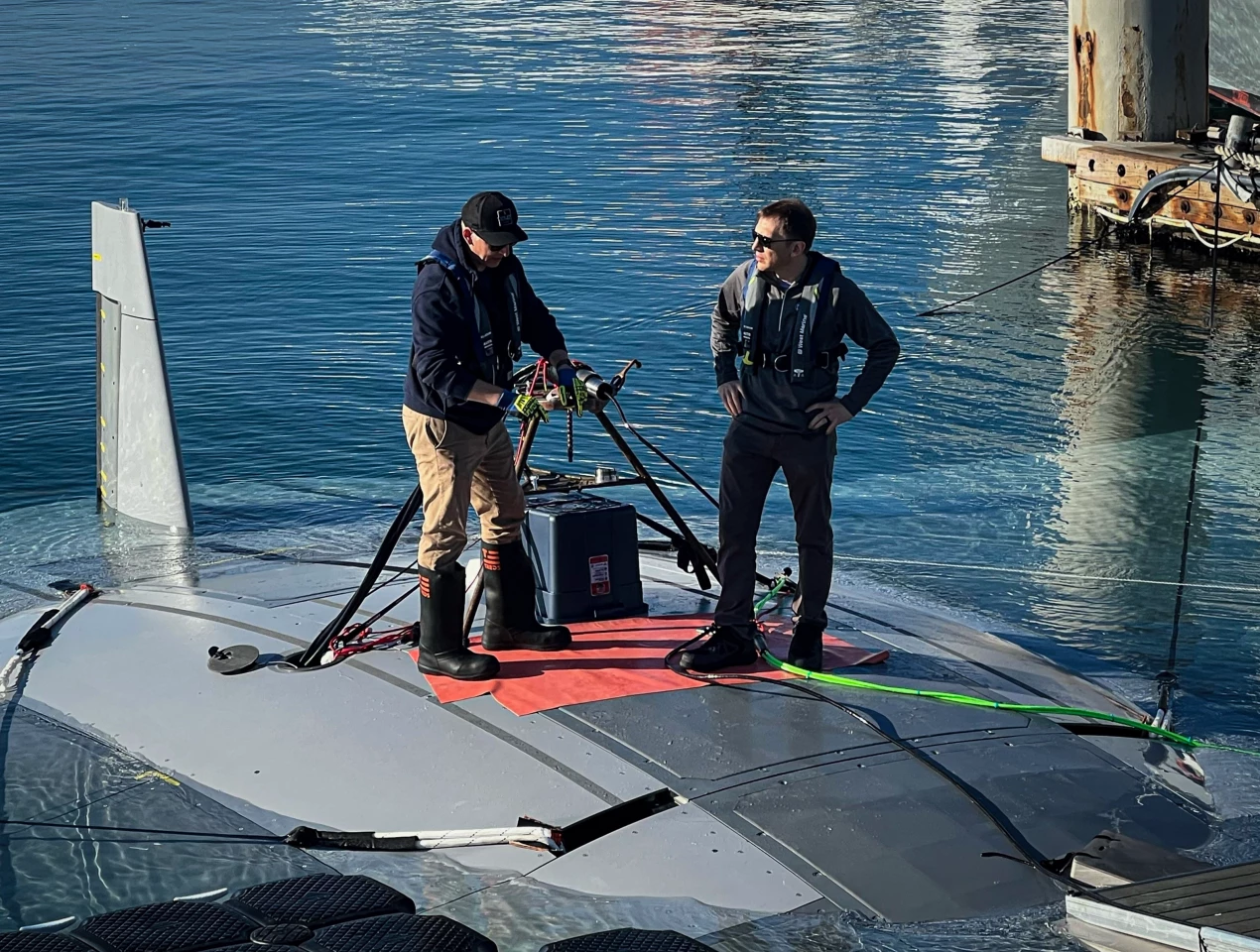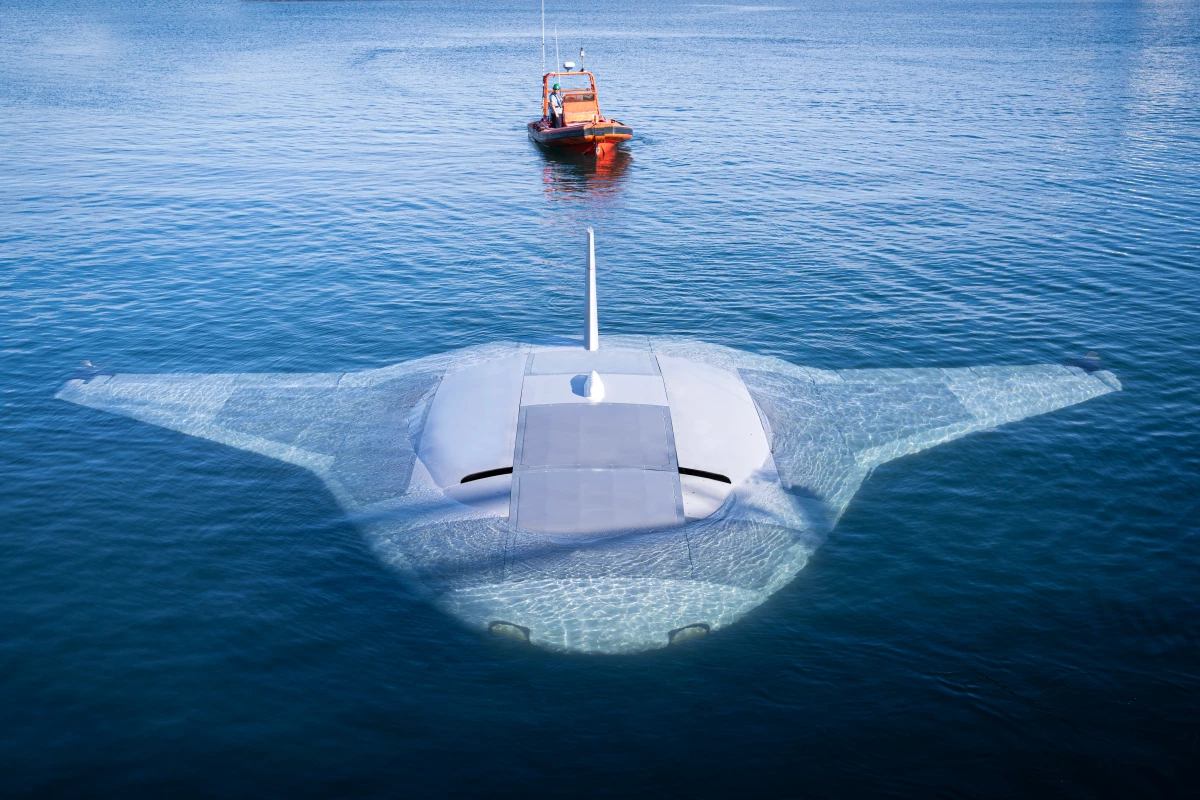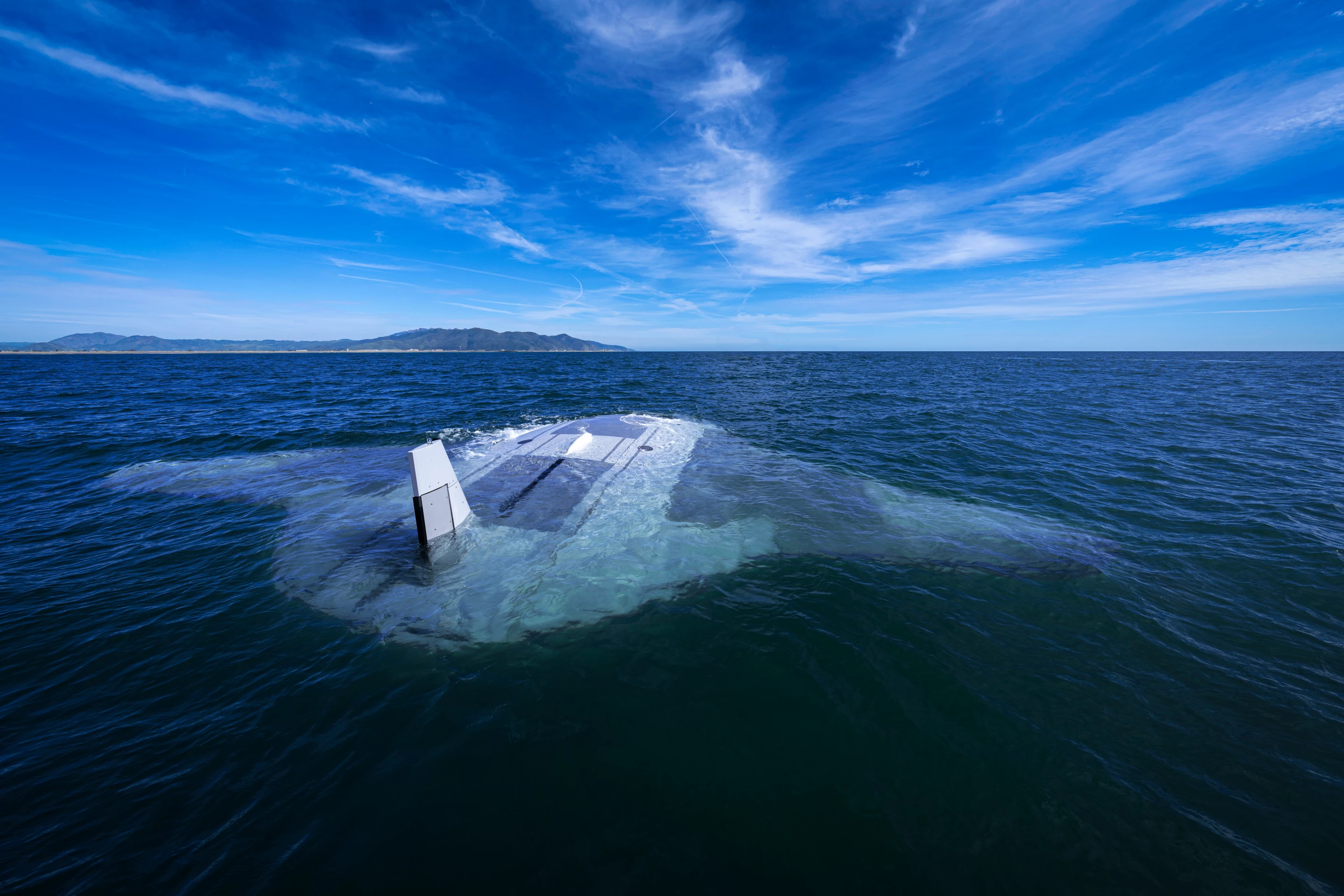DARPA has finally unveiled more of its mysterious Manta Ray robotic sub, with impressive new images of the prototype Uncrewed Underwater Vehicle (UUV) undergoing its first sea trials off the coast of Southern California.
Looking like a cross between a B-21 Raider bomber and a refugee from a '60s sci-fi television series, the Manta Ray is about as enigmatic. While DARPA has been happy to release some details about the sub, the agency has been a bit coy about very basic information about specifications and performance.
The Manta Ray is set to play a lead role in a new class of UUVs that are long range and long duration, as well as capable of handling a wide variety of payloads. It can also be shipped in sections in standard containers and assembled where needed, without taking up space at piers or naval facilities. In this way, it can be quickly deployed without wasting time and wear in transit.

From the presence of people and a small boat in the images, we can see that the Manta Ray isn't small. It also has a stern that seems to have shrouded propulsors and perhaps thrusters for maneuvering. Along with this, there are protuberances that are likely some sort of antenna, water inlets, and a general shape that indicates that it's designed to glide through the water in the most energy efficient way.
In other words, more is going into endurance than speed.
According to primary contractor Northrop Grumman, the Manta Ray has a modular construction and energy-saving systems that include the ability to anchor itself on the sea floor and go into hibernation mode. There are low-power undersea propulsion systems, new sensors for underwater detection and classification of threats and hazards, high-efficiency navigation and command and control systems, and cutting-edge anti-biofouling and material degradation approaches.

This first test period, which took place in February and March, focused on the Manta Ray's hydrodynamic performance while submerged, and the operation of the propulsion, steering, buoyancy, propellers, and control surfaces. The tests also included the portability of the sub as Manta Ray was disassembled and packed in five standard shipping containers before being sent from Northrop Grumman's Maryland facility to California.
"Our successful, full-scale Manta Ray testing validates the vehicle’s readiness to advance toward real-world operations after being rapidly assembled in the field from modular subsections," said Dr. Kyle Woerner, DARPA program manager for Manta Ray. "The combination of cross-country modular transportation, in-field assembly, and subsequent deployment demonstrates a first-of-kind capability for an extra-large UUV.
"Shipping the vehicle directly to its intended area of operation conserves energy that the vehicle would otherwise expend during transit," he added. "Once deployed, the vehicle uses efficient, buoyancy-driven gliding to move through the water.The craft is designed with several payload bays of multiple sizes and types to enable a wide variety of naval mission sets."
Source: DARPA







